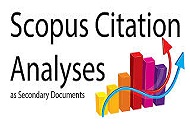The Effectiveness of Chain Drill Technique in Teaching Speaking
DOI:
https://doi.org/10.33394/jk.v4i2.1120Keywords:
Chain Drill Technique, Teaching, SpeakingAbstract
Abstrak: Penelitian ini bertujuan untuk mengetahui efektivitas penggunaan teknik Chain Drill dalam mengajar
berbicara bahasa Inggris. Penelitian ini adalah penelitian eksperimen semu menggunakan pretest-posttest
control group design. Instrumen yang digunakan untuk memperoleh data sampel pada penelitian ini adalah tes
berbicara dalam bentuk instruksi. Teknik yang digunakan untuk mengumpulkan data adalah pretest dan
posttestberbicara. Data yang diperoleh kemudian dianaisis dengan menggunakan analisis statistik deskriptif
dan inferensial untuk menarik sebuah kesimpulan. Berdasarkan analisis, ditemukan bahwa skor rata-rata post-
test lebih tinggi dari skor rata-rata pre-test (64≥37), sedangkan di kelas kontrol, skor rata-rata post-test juga
lebih tinggi daripada skor rata-rata pre-test (50≥30). Dari data yang diperoleh, diperoleh perbedaan skor baik
pada post-test dari pre-test antara kedua kelas; kelas eksperimen 14≥7 untuk kelas kontrol yang menunjukkan
skor eksperimen lebih tinggi daripada kelas kontrol. Analisis lebih lanjut pada uji-t, ditemukan bahwa skor uji-t
(2,52) lebih tinggi dari t-tabel (1,671) dengan tingkat kebebasan 42. Dengan kata lain, Ha diterima dan Ho
ditolak, dimana terdapat perbedaan signifikan dalam perolehan selisih skor antara kelas eksperimen dan
kontrol. Dengan demikian, dapat disimpulkan bahwa penggunaan teknik Chain Drill efektif dalam mengajar
berbicara.
Â
Abstract: This study aims at finding out the effectiveness of Chain Drill technique in teaching speaking. This
study useda quasi-experimental research method with pretest-posttest control group design. The instrument
used to gain data of samples was a speaking test in the form of instruction. The technique used to collect data
was pretest and posttest of speaking test. Data gained were subsequently analyzed by using descriptive and
inferential statistical analysis from which a conclusion was drawn. Based on the analysis, it was found that the
mean score of post-test was higher than the mean score of pre-test (64≥37), while in the control class, the mean
score of post-test was also higher than the mean score of pre-test (50≥30). From the data obtained, it was found
the difference in score both in post-test from pre-test between the two classes; experimental class 14≥7 for
control class which showed experimental score was higher than the control class. The further analysis on the t-
test, it was found that t-test score (2.52) was higher than t-table (1.671) with the degree of freedom 42. In other
words, H a was accepted and H o was rejected in which there was a significant difference in scores between
experiment and control class. Thus, it can be concluded that the use of Chain Drill technique is effective in
teaching speaking.
References
Bailey, Kathleen. M. (2005). Practical
English
Language
Teaching:
Speaking. New York: Mc Graw Hill
Brown, H. Douglas. (2001). Teaching by
Principles: An Interactive Approach
toLanguage Pedagogy. New York:
Pearson Education Company.
Cahyani, Nur Rahma. (2018).The Influence
of Using Chain Drill Technique
towards Students’ Speaking Ability at
the First Semester of The Eighth
Grade of SMPN 4 Natar in the
Academic Year of 2017/ 2018. Raden
Intan State Islamic University:
Lampung
Cameron,
Lynne.
(2001).
Teaching
language to Young Learners. Cambridge: Cambridge University
Press
Cambridge: Cambridge University
Press
Richards, J.C. (2008). Teaching Listening
and
Speaking.
Cambridge:
Cambridge
University
Pres.
Accessed in 01 January 2018 at
15 pm
Widyaningsih, Mila
Januar .(2014).
Improving Speaking Skill by Using
Chain Drill Technique at the Eighth
Grade Students of SMPNI Amlapura
in Academic Year 2013/2014.
Denpasar: Mahasaraswati Denpasar
University.
Downloads
Published
How to Cite
Issue
Section
Citation Check
License
License and Publishing AgreementIn submitting the manuscript to the journal, the authors certify that:
- They are authorized by their co-authors to enter into these arrangements.
- The work described has not been formally published before, except in the form of an abstract or as part of a published lecture, review, thesis, or overlay journal.
- That it is not under consideration for publication elsewhere,
- That its publication has been approved by all the author(s) and by the responsible authorities – tacitly or explicitly – of the institutes where the work has been carried out.
- They secure the right to reproduce any material that has already been published or copyrighted elsewhere.
- They agree to the following license and publishing agreement.
Authors who publish with JK agree to the following terms:
- Authors retain copyright and grant the journal right of first publication with the work simultaneously licensed under a Creative Commons Attribution License (CC BY-SA 4.0) that allows others to share the work with an acknowledgment of the work's authorship and initial publication in this journal.Â
- Authors are able to enter into separate, additional contractual arrangements for the non-exclusive distribution of the journal's published version of the work (e.g., post it to an institutional repository or publish it in a book), with an acknowledgment of its initial publication in this journal.
- Authors are permitted and encouraged to post their work online (e.g., in institutional repositories or on their website) prior to and during the submission process, as it can lead to productive exchanges, as well as earlier and greater citation of published work.
- Open Data Commons Attribution License, http://www.opendatacommons.org/licenses/by/1.0/ (default)

This work is licensed under a Creative Commons Attribution-ShareAlike 4.0 International License.








